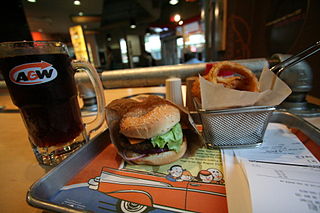
by: Amy Getter, RN, MS
Death scenarios, debates about assisted suicide, hospice and end of life commentaries, “Death cafes” and “death dinners” have been in magazines, the subject of special reports on television, newspaper articles and in various other media sources. It seems that a new popularity has risen among the press to highlight the “taboo” subject of death. Naturally, as a hospice nurse, I am pleased to see an increasing interest from the public in things surrounding dying (since, after all, it is what I talk about every day!). More recently, palliative care has joined hospice and dying in the media’s scrutiny and discussion.
Palliative care is now a recognized medical specialty. Over half of the nation’s hospitals offer a palliative care team: a group of experts that usually consists of physicians, social workers, chaplains and nurses. One of their goals is to help a patient and their family members navigate through the maze of hospitalizations and different treatment possibilities while also alleviating disease symptoms for a person with a serious, life threatening illness. A good friend who works on a palliative care team in a large Seattle hospital shared with me that she uses the term “menu” when speaking to someone regarding the choices surrounding a person with a life-limiting illness.
That started me thinking about what I affectionately term the “Death Menu” with all the varied courses. People are offered options, like palliative care, that is included as one of the many “choices on the menu”. My friend relayed a story to me recently about a woman that the oncologist had referred to the palliative care team.
Paula was in her early forties, in the end stages of metastatic cancer. She was experiencing extreme pain that necessitated hospitalization. Although expert consultation and multiple interventions were successfully enjoined, Paula felt desperate about her life. She wasn’t dying today, but like all of us, she was dying someday and perhaps had a better realization than the rest of us that her life was truly limited. She was considering how she wanted to spend the remaining weeks if that was all she had. Various menu items were presented to her including another aggressive palliative chemotherapy; a clinical trial that might extend her life (many of the available treatments had already been tried and had failed); or perhaps going home with hospice. That was when Paula asked why wasn’t she offered the opportunity she had often provided to the animals she tended to over the years, when advanced disease was causing undo suffering? She had given them something to “help them over their last hurdle”.
My friend shared with Paula that a person had a similar option, since 1) She had a terminal diagnosis, with a life expectancy of less than 6 months due to her disease progression and 2) She was capable of making this decision for herself. She could choose to end her life “prematurely”, by taking a lethal number of pills prescribed by her doctor, if that was her choice. Paula had never heard of the term DWD (death with dignity) or PAD (physician assisted death). Nor had she ever heard of the nonprofit agency that assisted people with jumping through the hoops to complete the many details in order to attain the prescription (Compassion and Choices). This option was available in the state in which Paula resided, and she was qualified, having a “terminal” illness, to pursue obtaining the medications if she chose to. (No, PAD is not available to just anyone. No, it is not something that is done to a person. No, it is not a quick process nor an easy solution. It is a menu selection made by a person who has a choice in what their final days might look like).
I don’t know the rest of the story, except that Paula did go home, and she did choose to have hospice care. She may have also chosen PAD. If in fact she did, her death certificate would read the cause of death was metastatic cervical cancer. It would be decided by Paula, how her life ended, and her prerogative, whether death occurred naturally or she helped herself “over that last hurdle”. After all, it was Paula’s death.
I have witnessed many people face their mortality with dignity and grace. Some have had every available including “futile” treatment literally up to the last day of their life; some pursued palliative treatment rather than aggressive surgeries; some opted for no treatment; some have chosen hospice and others have not; some died in their homes; others died in the hospital; some chose PAD; most have not; some have attempted to make the choice for PAD but obstacles have been placed in their way.
I don’t pretend to have the ethical answers, I am happy to admit that I don’t know THE right choice for another person to make. I am just very glad that there are a number of menu items to choose from, and that each of us will have to decide for ourselves what our entrée will be. Like all menus, though, I would hope that the choices are listed accurately, honestly without prejudice or partisanship. Soon enough, the death menu will be our own, for perusal and selection, and my hope is that everyone has the opportunity to “Have it your way”.



